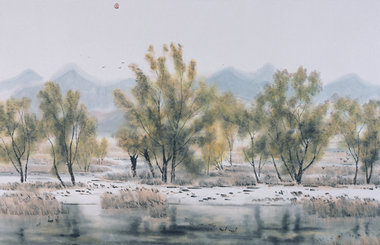Where pure rivers flow and the sacrificial ducks are plastic
By Chen Nan ( China Daily ) Updated: 2017-09-09 07:54:35It's unlikely to be on many people's list of "Ten places I must seen in China before I die."
In fact Huichang county in Jiangxi province is so out of the way that it takes two hours to get there from the nearest big airport, in the city of Ganzhou, and its inhabitants are generally perceived to be poverty-stricken.
However, once you set foot in Huichang you will find yourself surrounded by green mountains and rivers with clear water, breathing pristine air, and getting a profound insight into China's Taoist culture.
Huichang county, which neighbors Fujian and Guangdong provinces, sits at the confluence of two waterways, which form the Ganjiang River, a major branch of the Yangtze River, in Nanchang, Jiangxi's capital. In ancient times people from northern China used these rivers to travel and trade.
The county covers about 2,700 square kilometers and has a population of 527,000. It is widely known as one of the old revolutionary bases, one that made a great contribution in the founding of the People's Republic of China.
In 1934 Mao Zedong lived in Huichang for a month, and he climbed Huichang Mountain, which inspired him to write a poem in which he proclaimed that "the scenery here is uniquely good".
One of the most well-known scenic spots is Hanxianyan, a mountainous region covering 42-square-km, which has about 100 tourist attractions.
It was here that Han Zhongli, a Chinese legendary character and one of the Eight Immortals of Taoism, lived, and its steep, rocky and wooden steps are popular with hikers.
One of the locals, Zhou Wenrong, 83, was in the news recently for offering tourists free cups of tea for 24 years.
|
|
|
|
|
|
|
|

























 Raymond Zhou:
Raymond Zhou: Pauline D Loh:
Pauline D Loh: Hot Pot
Hot Pot Eco China
Eco China China Dream
China Dream China Face
China Face






